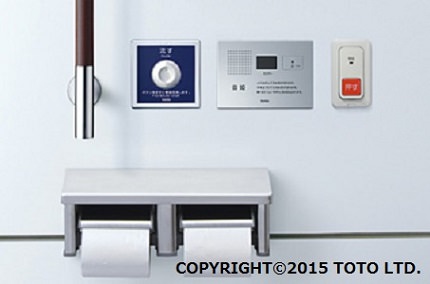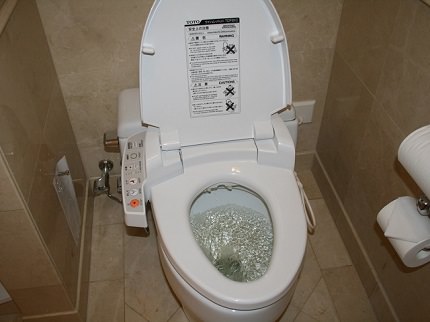-
- USA/Canada 1-800-285-2726
- Australia (02) 8006 4411

Depending upon where you travel in Japan you may encounter a traditional Japanese-style toilet. These can be found in public restrooms in shopping malls, train stations, and in small town minshuku (family run inns). These commodes are at floor level. To use, face the hump. In a location with several toilets there may be a Western toilet as indicated on the door, and if there is a queue, line up by stall. On the Shinkansen (bullet train) go for the handicapped stall. This is always a Western-style toilet. In public restrooms, you may need to be prepared with a travel pack of tissues. These packages are often handed out free (with advertisements on the reverse) as you walk along major thoroughfares in the large cities, such as Tokyo and Osaka. So, you don't make a mistake and walk into the wrong door, especially when traveling in rural areas, memorize the Kanji for: 男(men)/女(women) On the other hand, Japan is recognized for its extremely high tech toilets. In upscale hotels and ryokans (high-end Japanese inns), and even many upscale restaurants, you will find toilets with heated seats -- a blessing on a cool, autumn day -- along with an array of other buttons that spray water to wash you, air to dry you, etc. There is a good chance you will miss these when you return to the USA.

Japan's leading toilet manufacturer Toto has developed a product called Otohime, or Sound Princess to mask bathroom sounds. Otohime can be found at many public bathrooms that have Western-style toilets. In the past, women were embarrassed of the sounds they made in the bathroom and often resorted to flushing twice, once to mask the sound and the second to actually flush. This resulted in an excessive waste of water, and thus Toto's success in creating the Otohime has helped conserve water as well as save women from embarrassment.

Many Western-style Japanese bathrooms have washlets. Washlets, also known as bidet, are toilet seats that spray water for cleaning. The term washlet is actually a registered trademark of Toto, the leading Japanese toilet manufacturer but today, even non-Toto bidet products are commonly referred to as washlet. The washlet feature can be as simple wash and dry or advanced as controlling water pressure, massaging, and etc. Some washlet also come with a sound feature that can be utilized as the Otohime as well as a deodorizing function to mask not only the sound, but the scent after your bathroom use.
How To Use:
While the washlet may seem intimidating at first, it isn’t very difficult to use after a couple tries. For a basic washlet experience, once you are finished with your business and are ready to clean yourself, press either the おしり(oshiri), for men or women, or ビデ, for women. Men are welcome to use the ビデ (bidet), but it may not clean the area you want. Some sprays even offer a soft spray option for the おしり(oshiri). When you want to end the spray, press on the 止 button. It's typically red or orange, or is outlined in that color, and usually will say “STOP” in English. You can also adjust the pressure of the water and temperature of the seat. If these options are available, they will usually be shown on a scale with a plus on one side and a minus on the other, indicating more or less pressure/heat. While not all washlets use the same interface, the basics are all very similar and outlined above. We hope you get the chance to experience the wonders that are Japan’s high-tech toilets.
Japan is extremely safe, with one of the lowest crime rates in the world
Find Your Perfect Type of Accommodation
One of the most efficient public transportation systems in the world
Leading Shopping and Entertainment District